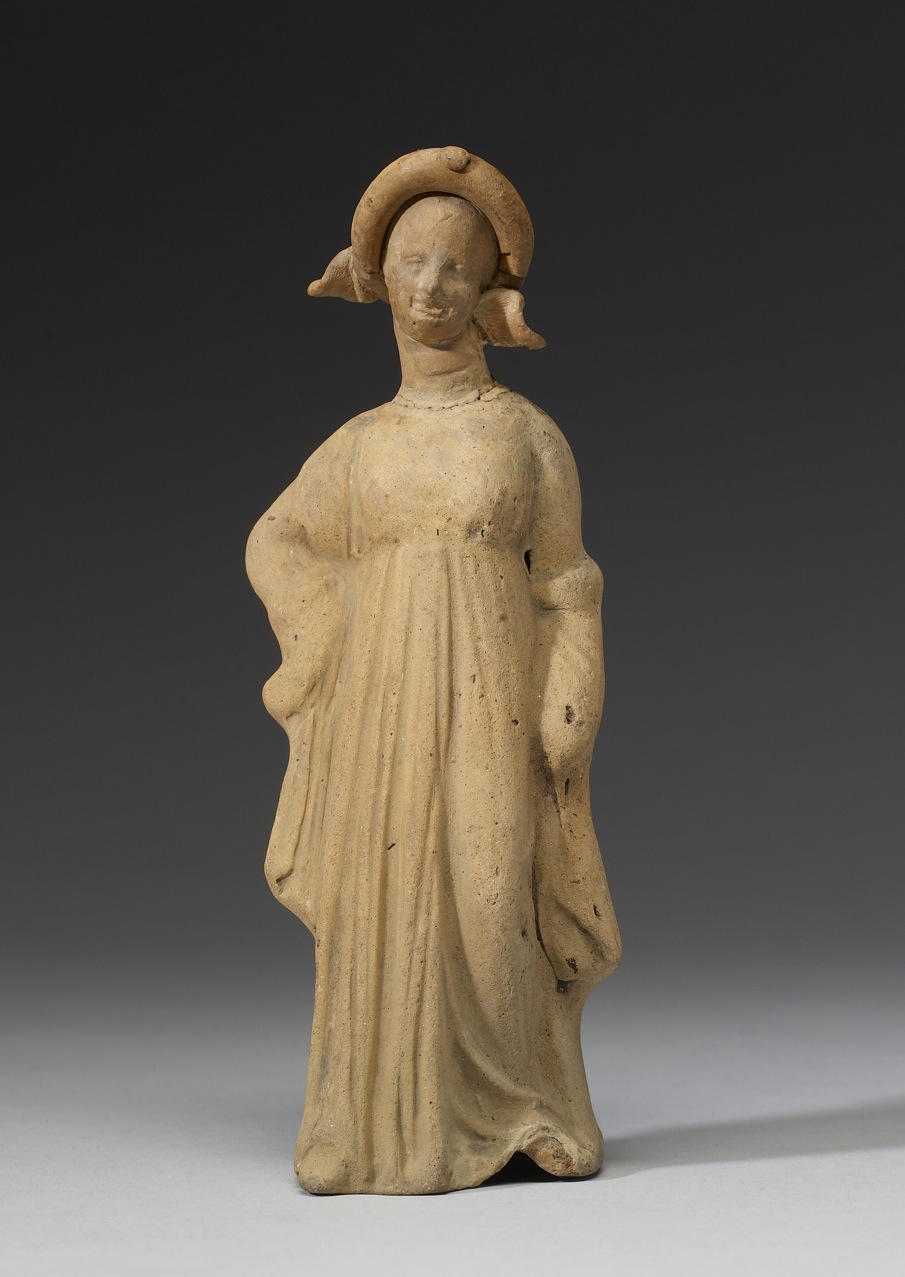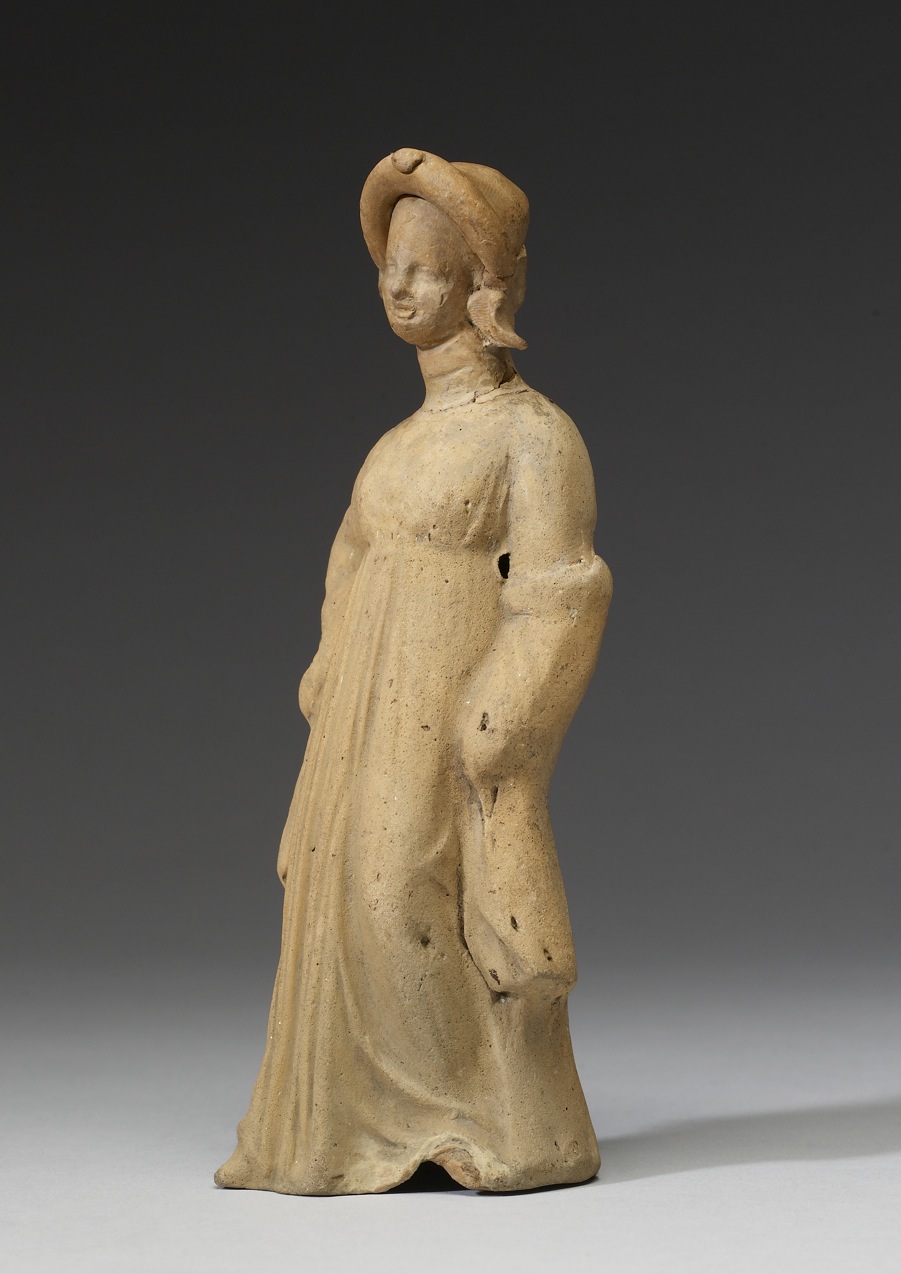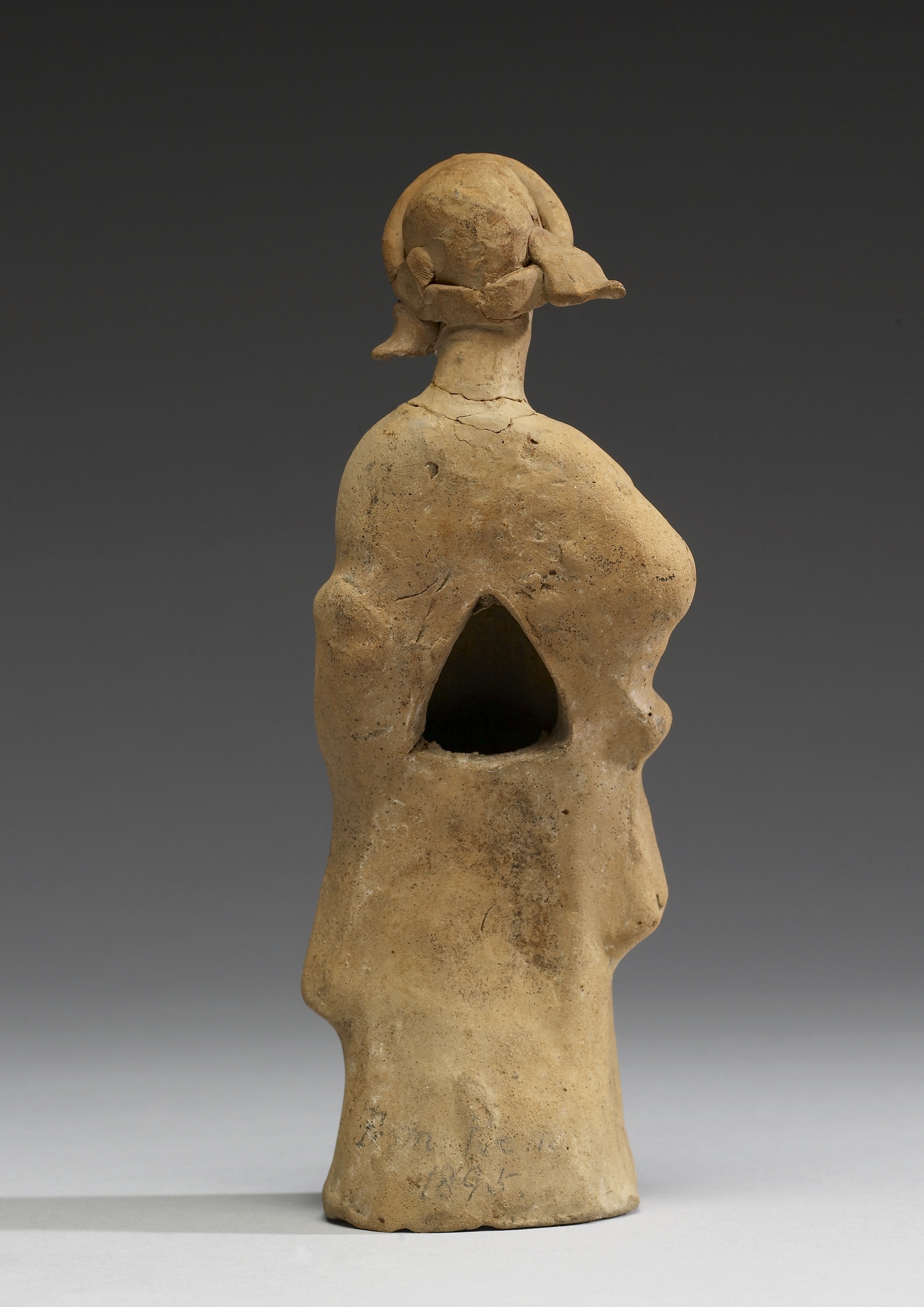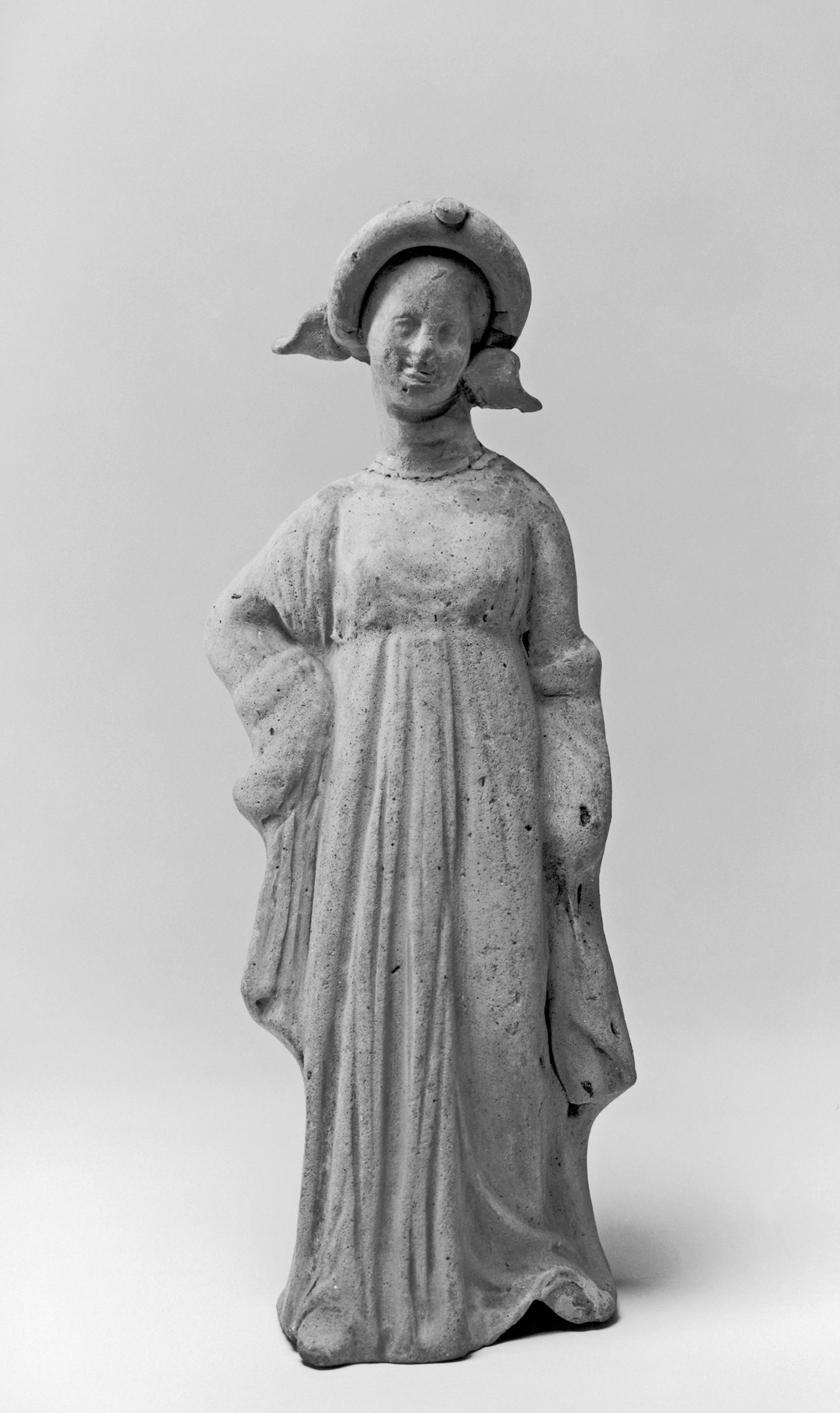Draped Maiden with Wreath
(Ancient Greece )
This maiden wears a thick wreath made from grass and flowers decorated with large leaves and a blossom above the brow.
Although generally referred to as Tanagra figurines after the most famous findspot, Tanagra (modern Schimatari) in Boeotia, Greece, statuettes of this type have been found at other sites in the ancient world, including Myrina and Smyrna (modern Izmir) in Asia Minor. The most common forms of the statuettes depict young women sitting, standing, or in the process of graceful movement, but there are also examples showing men or children. The statuettes were used as grave offerings, votives, decorative objects, and perhaps toys. The hair, clothing, skin, and jewelry of the pieces were originally painted, although most of the colors are presently faded.
Provenance
Provenance (from the French provenir, 'to come from/forth') is the chronology of the ownership, custody, or location of a historical object. Learn more about provenance at the Walters.
Jean Mikas, Paris and Athens, [date and mode of acquisition unknown]; Joseph Brummer, 1924, by purchase [Brummer inv. no. P1210] [from Athens]; Henry Walters, Baltimore, 1925, by purchase; Walters Art Museum, 1931, by bequest.
Exhibitions
| 1988-1989 | From Alexander to Cleopatra: Greek Art of the Hellenistic Age. The Walters Art Gallery, Baltimore. |
Geographies
Greece (Place of Origin)
Measurements
6 11/16 x 2 3/8 x 2 7/16 in. (17 x 6 x 6.1 cm)
Credit Line
Acquired by Henry Walters, 1925
Location in Museum
Accession Number
In libraries, galleries, museums, and archives, an accession number is a unique identifier assigned to each object in the collection.
In libraries, galleries, museums, and archives, an accession number is a unique identifier assigned to each object in the collection.
48.277














